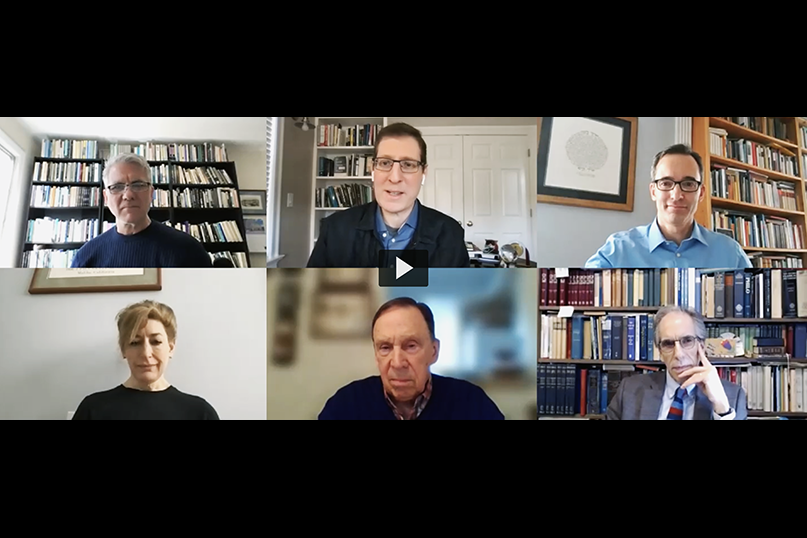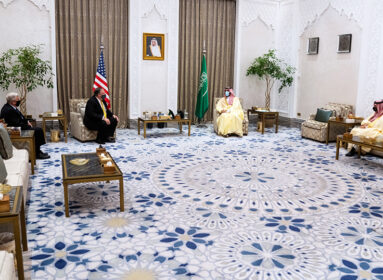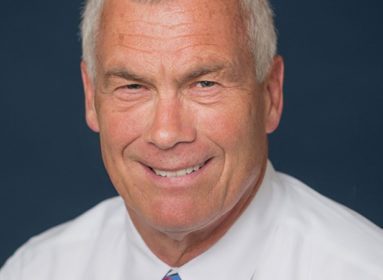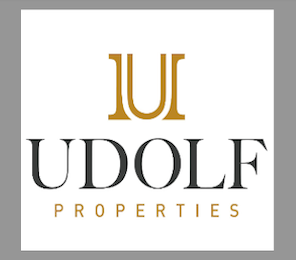
By Stacey Dresner
STORRS, Connecticut – More than 1,600 University of Connecticut students have enrolled in “Why the Jews? Confronting Antisemitism,” a free online course that began last month.
Now those students have a real-life example of anti-Zionism veering into antisemitism in light of a late February incident involving Jewish UConn senior Natalie Shclover.
Shclover was called a “white supremacist,” “f***ing Zionist,” received threats, and has been thrown out of her a cappella group with no due process after the incident with Muslim students. (See related story on this page).
Prof. Avinoam Patt, the Doris and Simon Konover Chair of Judaic Studies and director of UConn’s Center for Judaic Studies and Contemporary Jewish Life and the lead faculty for the seven-week Confronting Antisemitism course, says Shclover’s experience may become a part of the class.
“We have discussed including the incident in Module 6 of the class, when we teach students about Israel, Anti-Zionism, and Antisemitism,” said Patt. “Sadly, we now have a very current case study to share with the students.”
“Confronting Antisemitism” is the fifth in a series of ‘pop up’ courses that UConn has been offering dealing with important contemporary topics. The first pop-up, held in 2020, dealt with COVID-19, followed by courses on the climate crisis, and anti-Black and anti-Asian racism. These one-credit pop-ups are shorter than regular semester-long courses – “Confronting Antisemitism” is only seven weeks long – and they are all pass/fail and asynchronous, allowing students to view the courses’ pre-recorded module on their own time during the week.
The course is multidisciplinary, with collaboration between several professors who specialize in other subjects including history, English, philosophy, sociology and more.
“UConn decided to offer these classes that [cover] more contemporary topics, important issues that are very current. The ideas was, ‘Let’s gather our experts on a current, really pressing issue, get them all together and deliver this in an online format,” Patt says. “Fundamentally, our basic belief is that one of the best ways to respond to hatred or discrimination is through education. So that’s what we’re trying to do.”
“Confronting Antisemitism” was designed in large part in response to a series of antisemitic acts in late 2020 and early 2021 on the UConn Storrs campus. Mitch Kuperstein, a UConn senior at the time, started a petition asking the UConn administration to offer a class on antisemitism.
“We had several antisemitic incidents on campus so after that happened, I was thinking a good actionable way that we could confront it would be to have a free, one-credit, easily-accessible course about antisemitism that students could sign up for,” says Kuperstein, who graduated in 2021.
Approximately 900 students signed the petition. During a solidarity gathering that followed the antisemitic incidents, Kuperstein spoke about the need for a class on the subject.
Kuperstein and several other students met with UConn’s Provost last spring to propose the course and, by the fall, the course was under development.
“The students from the Jewish community are all excited about the course,” Kuperstein says. “It just started but I’ve heard some good feedback and students are enjoying it.”
“I’m encouraged by the strong interest from students for this course and am grateful for Mitch Kuperstein’s leadership in proposing it to senior university administrators,” says UConn Hillel Executive Director Edina Oestreicher. “My hope is that the course is offered every semester and becomes embedded in UConn’s broader diversity, equity and inclusion initiatives. This course is a positive development in ensuring for a positive UConn campus climate in which Jewish students, and by extension, all students, feel comfortable expressing their identity and values; free of antisemitism, harassment and marginalization.”
In addition to students like Kuperstein who lobbied for the course, Patt commended UConn Provost Carl Lejuez who sought Patt’s help in developing the class.
“They called me and said, ‘Can you help us organize this class?’ I that’s why we have a Center for Studies at UConn, of course we’re going to do this,” Patt said. “But we also have amazing faculty experts who run the gamut of all of Jewish history. I thought this was a great opportunity to expose our students to all of these faculty experts.”
Defining Judaism and Antisemitism
Before delving right into the topic of antisemitism, Patt says that the course begins with some instruction about Judaism itself.
“We didn’t want a class just on the history of antisemitism – just on the ways in which Jews have been hated and persecuted throughout history. There’s much more to Jewish history than that. And we figured that for most of our students this is the only class they are ever going to take on Jews, Jewish history, Jewish culture,” explains Patt.
So, the first section of the first module, held the week of March 7, featured an overview of what Judaism is and discussed Jewish history and culture. The class was led by Stuart Miller, professor of Hebrew and Judaic Studies at UConn.
“In a class where we are teaching students about antisemitism, we didn’t want antisemites to define who or what Jews are; we wanted to have experts on Jewish history and culture to do that,” Patt says.
Antisemitism was then introduced in the third and final segment of that first module.
“We defined antisemitism… We want to teach students where [antisemtism] comes from,” Patt says. “Why has this been such a central component of world history from antiquity to the present?”
Those beginnings were discussed by Professors Sara Johnson and Miller.
Johnson, a professor of comparative literature and cultural studies, whose expertise is in Hellenistic Jewish literature discussed Exodus and Esther -“examples of events that may not be fully historical but which have come to assume significant religious and narrative importance within Jewish tradition,” Johnson says, as well as the Maccabean Revolt and the riots in Alexandria –“historical occasions when Jews came into violent conflict with non-Jews, under circumstances that are still being actively debated by scholars.
“Whether either should be classified as an example of “antisemitism” is uncertain,” Johnson adds, “but they loom large in Jewish memory as experiences of violence and oppression.
Miller covered Early Christianity.
“While most people believe that the crucifixion of Jesus is at the heart of the animosity directed towards the Jews by Christians, there is much more to the story,” Miller explains. “Early Christianity started out as a form of Judaism. Jesus and his followers were all practicing Jews and never thought of themselves as anything else.
“The adherents of an emerging Gentile ‘Christianity’ following Jesus’ death were determined to define their faith as a distinct religion, one in which many of the practices of Judaism no longer applied. The anti-Judaism that is expressed in the writings of the early church fathers added atheological dimension to this effort, which sought to define further precisely how Christianity and Judaism differed.”
In upcoming weeks the course will move up to the Medieval period, covering where the myth about the “blood libel” and Jewish greed came from, as well as the Modern period and the Protocols of the Elders of Zion.
The following weeks include modules on the Holocaust, antisemitism in America, and Israel and anti-Zionism vs. antisemitism in Module 6, where students will learn where criticism of Israel crosses the line into antisemitism, as explained by Prof. Patt.
“When Jews anywhere in the world are held collectively responsible for Israel’s conduct; when Jews are treated, simply because they are Jewish, as agents of Israel; likewise, using “Zionist” to mean “Jew” crosses this line; when antisemitic stereotypes held against Jews are projected onto the Jewish state; when extreme criticism of Israel demonizes the State as uniquely evil among the nations of the world,” Patt said.
Including the example of their fellow student Natalie Shclover and her experience at UConn could be eye-opening for those taking the course.
“The goal of the course is to use education as a response to discrimination and intolerance happening at this very moment – and we still believe that at an institution of higher education, we can and should continue to use education to help students learn how to confront antisemitism in their midst,” Patt said.
The course will wrap up the week of April 25 with “Antisemtism Old and New”, which includes participation by UConn Hillel Executive Director Edina Oestreicer and Marji Lipshez-Shapiro, assistant deputy director of the Connecticut office of the Anti-Defamation League.
Last year, after the incident in which antisemitic graffiti was discovered at UConn, Lipshez-Shapiro worked with Oestreicher on a program for all 60 members of the school’s residential life staff, and one for UConn faculty and administration “about what the Jewish students are experiencing and why we needed the UConn community to step up and openly fight antisemitism,” Lipshez-Shapiro says.
“I can’t say enough good things about the course,” she adds. “I’m so excited to be a part of what I believe is the first course of its kind on antisemitism with such a large reach…I believe education leads to understanding. And there is a lack of knowledge not only about the history, but also about the bigotry, bias and hate faced by the Jewish community. Taking a course like this is going to give them information that very few people have.”
A diverse people
Besides lectures, Confronting Antisemtism will also offer an interactive piece called “Engage and Connect” featuring different texts, music, art or film.
“It’s not meant to be a class where you just have professors lecture as they normally do,” Patt says. “Each week there’s music or art or poetry or photographs – different things that they’re supposed to read and think about and respond and react to.”
At the end of the first class, Patt put together four music videos of contemporary Jewish musical performers.
“It goes all the way from Nissim Black who is a Chasidic black rapper who lives in Israel – not what you would typically expect; to A-WA, Yemenite Israeli musicians who perform in Arabic, to Adam Sandler doing the Chanukah Song, to Haim, an LA-based group,” Patt says. “It’s a way to connect with the students and it gets them to think, ‘These are all Jews and this is all Jewish music. Jews are a very diverse people.’”
During the module dealing with antisemitism in America, the students will watch “Gentleman’s Agreement,” the 1948 film about a journaliust who poses as a Jew in New York City to experience antisemitism.
Another film featured is “A House Built by Hope,” a documentary film about a community of Holocaust survivors in Danielson, Connecticut.
“There are a lot of Connecticut connections because, frankly, most of our students probably are from Connecticut, so we want to make that connection to them,” adds Patt. “We are taking a very global approach to history but we also want to make it pretty local.”
They also want to stress to their students that there have been long stretches of time through the ages when Jews lived peacefully among their non-Jewish neighbors.
“The nature of the course – and the events on campus that prompted the demand for it – make it inevitable that we are focusing on the reasons why Jews have been targeted for violence throughout their history. But, there are also so many examples throughout history of peaceful cooperation and fruitful co-existence,” Johnson says.
“Throughout most of history between the Babylonian Exile and the founding of Israel, Jews have lived as subjects of foreign rule and/or minority communities within a larger non-Jewish state, and persecution and oppression have often been part of that story, but by no means always the largest part. Students need to know that positive multicultural exchange between Jews and non-Jews has always been a part of Jewish history, and that history provides positive models for the way forward. And if perhaps some students have only ever learned about Judaism in the context of attacks against it, they should be given an opportunity to learn how rich and diverse Jewish culture truly is,” she adds.
At this time – when antisemitic attacks are on a steep rise – with 158 antisemitic incidents in the U.S. reported by the media in January alone – this is also an opportunity for them to become allies with Jew and other minorities.
“The hope is that, once they’ve learned about the diverse nature of the Jewish experience that they will understand and appreciate how important it is to speak out when they see forms of discrimination; to not only support Jews as a minority group, but to support and appreciate our need to create a diverse society that celebrates all different minority experiences,” Patt said.
Main Photo: UConn class: The final wrap-up discussion of Confronting Antisemitism with, bottom row, from left, Susan Herbst, Arnie Dashefsky and Stuart Miller; Top Row, from left, Jeffrey Shoulson, Avi Patt and Sebastian Wogenstein.








 Southern New England Jewish Ledger
Southern New England Jewish Ledger










